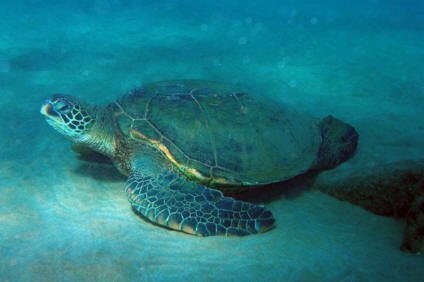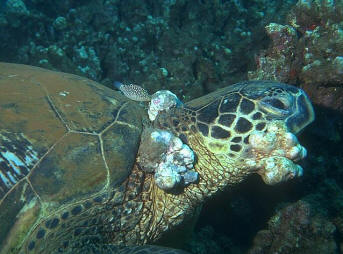|
Green Sea Turtle
Chelonia mydas

The Green Sea Turtle is the
largest hard-shelled sea turtle. Adult shell color varies from
grey to green or even brown. Often, shells have bold streaks or
spots and their undersides are usually white. One characteristic
that separates the green sea turtle from other species of sea
turtles is their small rounded head. These turtles can grow to
be over 600lbs.
Photo by: Dave Dring
Their population is depleting still today and in some areas it
is nearly completely extinct. These turtles are over exploited
and endangered because they are being hunted. Turtle oil is
still used today in some cosmetics products. The skin is used
for leather trade and also the shells are very valuable. Years
ago, turtles were hunted to feed fishermen. Today, turtle meat
is used in a gourmet treat called turtle soup. Another threat to
the Green Sea Turtle population involves threats to the nest.
Predators seek the eggs as a source of nutrients.

A final
factor factor contributing to the green turtle's
decline is Fibropapillomatosis. Fibropapillomatosis is a
disease in sea turtles characterized by a development
of multiple tumors on the skin and internal organs.
These tumors interfere with swimming, eating, breathing,
vision, and reproduction. Turtles with excessive tumors
become debilitated and die.
Created by:
Melissa
Martinelli
Last Updated: April 27th, 2007 |